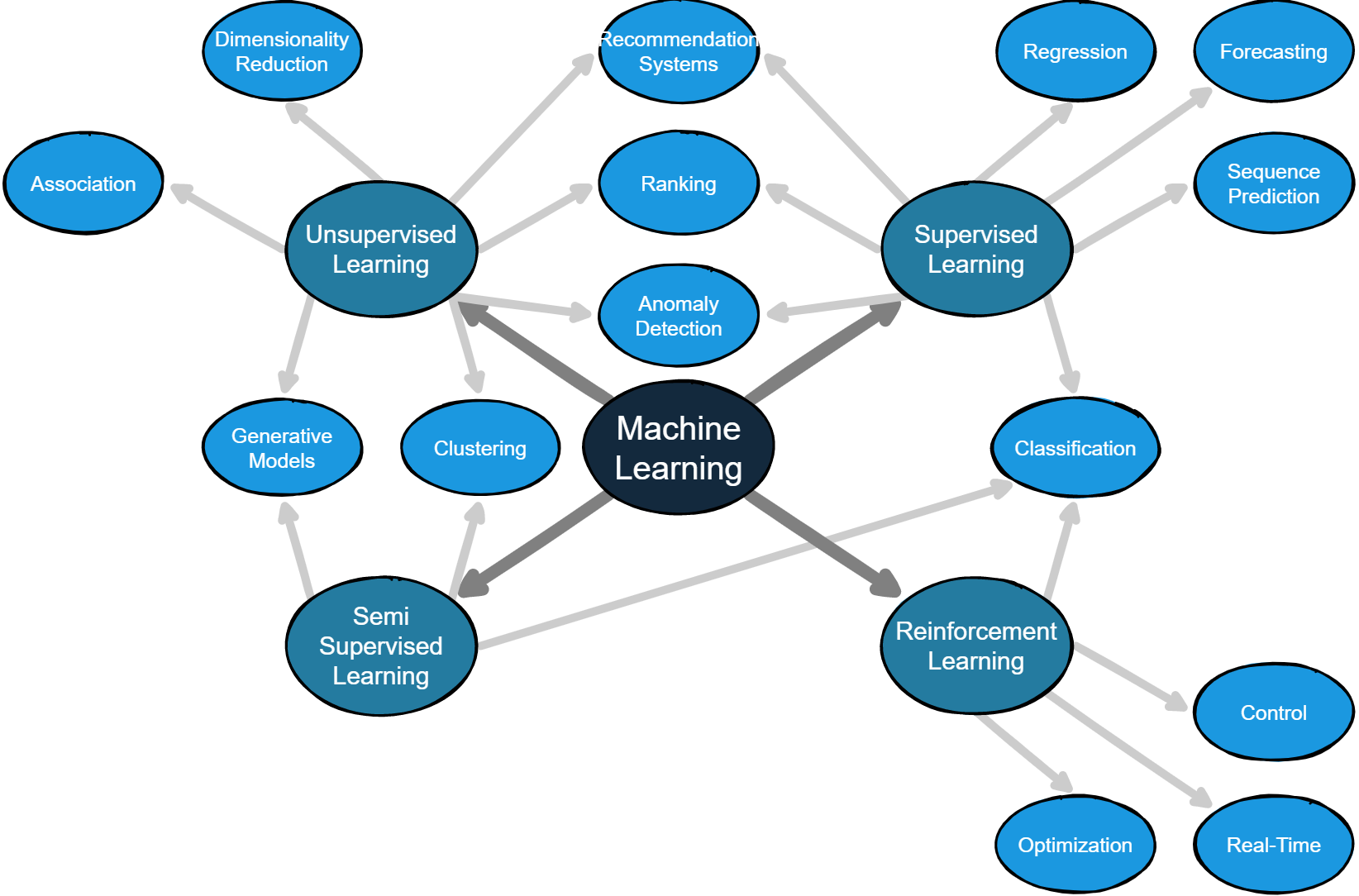Types of Machine Learning Problems
Types of Machine Learning Problems
The vast majority of problems that can be solved with Machine Learning can be classified into one of the following categories. If you know of any other type of problem that we have not included, write to us so that we can include it in the list.
Regression: Regression is a machine learning problem that aims to predict a continuous value for a given input. For example, a regression algorithm might predict the price of a house based on its size, location, and other features.
📌 Classification: Classification is a machine learning problem in which the goal is to assign a class label to a given input. For example, a classification algorithm might predict whether an email is spam or not spam (also known as ham).
📌 Clustering: Clustering is an unsupervised machine learning problem in which the goal is to divide a dataset into groups, or clusters, based on similarity. For example, a clustering algorithm might group customers into different segments based on their purchase history.
📌 Optimization: Optimization is a machine learning problem that aims to find the best solution to a given situation. For example, an optimization algorithm might find the best set of parameters for a machine learning model or the best path for a robot to take to reach a goal.
📌 Dimensionality Reduction: Dimensionality reduction is a machine learning problem that aims to reduce the number of features in a dataset while preserving as much information as possible.
📌 Anomaly Detection: Anomaly detection is a type of machine learning problem in which the goal is to identify data points significantly different from the rest of the data. For example, an anomaly detection algorithm might detect fraud in credit card transactions.
📌 Recommendation Systems: Recommendation systems are a type of machine learning problem that aims to recommend items to users based on their preferences.
📌 Sequence Prediction: Sequence prediction is a machine learning problem in which the goal is to predict the next value in a data sequence. For example, a sequence prediction algorithm might predict the next word in a sentence.
📌 Forecasting: Forecasting is a machine learning problem that aims to predict future values based on historical data. For example, a forecasting algorithm might predict future sales or stock prices.
📌 Generative Models: Generative models are a type of machine learning problem that aims to generate new data similar to existing data. For example, a generative model might be used to create new images or text that are similar to existing images or text. These are some of the most common types of machine learning problems, but there are many others.

